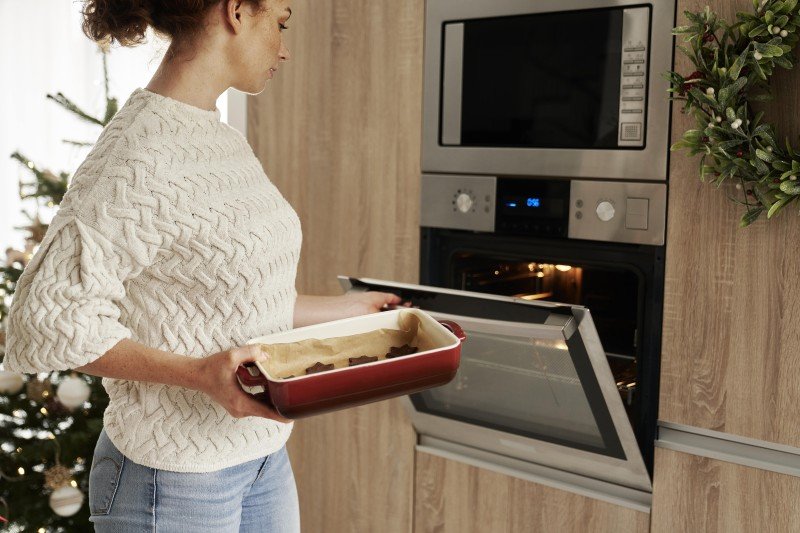Ten Things You've Learned In Kindergarden That Will Help You With Hobs And Ovens
Understanding Hobs and Ovens: A Comprehensive Guide for Cooking Enthusiasts
The kitchen is frequently considered the heart of the home, where culinary creations come to life. 2 essential parts of any kitchen are the hob and the oven. While they are both vital for food preparation and cooking, numerous homeowners may not totally comprehend the differences, performances, and different types available in the market today. In this article, we will explore these home appliances in information, helping you make notified choices for your cooking needs.
Tabulation
- What is a Hob?
- 1.1 Types of Hobs
- 1.2 Benefits of Different Hob Types
- What is an Oven?
- 2.1 Types of Ovens
- 2.2 Benefits of Different Oven Types
- Selecting the Right Hob and Oven for Your Kitchen
- Frequently Asked Questions (FAQs)
- Conclusion
What is a Hob?
A hob, commonly referred to as a cooktop, is a cooking surface that you put pots and pans on to prepare food. It includes a variety of heating aspects and is often set up on counter tops. In contemporary cooking areas, hobs come in various designs, technologies, and performances.
1.1 Types of Hobs
There are numerous types of hobs offered in the market:
Type
Description
Gas Hob
Utilizes gas burners for cooking, providing exact temperature level control.
Electric Hob
Runs using electrical heating aspects, frequently seen in strong or glowing types.
Induction Hob
Utilizes magnetic fields to heat pots and pans straight, promoting energy performance.
Ceramic Hob
Features a smooth glass top, making use of electric coils beneath the surface.
Solid Plate Hob
Standard electric hobs with exposed metal plates that warm up.
1.2 Benefits of Different Hob Types
Gas Hobs:
- Quick cooling and heating.
- Visual flame control for precise cooking.
Electric Hobs:
- Even heating; suitable for simmering and boiling.
- Easy to clean, specifically flat surfaces.
Induction Hobs:
- Energy-efficient as just the pot warms up.
- Safety features, such as automated shut-off.
Ceramic Hobs:
- Attractive aesthetics with a smooth surface.
- Even surface areas for easy cleansing.
Strong Plate Hobs:
- Cost-effective and durable.
- Good for basic cooking requirements.
What is an Oven?
An oven is a kitchen appliance used for baking, roasting, and broiling food. Ovens can be standalone units or built into kitchen cabinets, providing numerous cooking techniques that can improve or change active ingredients.
2.1 Types of Ovens
Similar to hobs, there are several kinds of ovens, each with its benefits:
Type
Description
Traditional Oven
Operates with heating components, ideal for baking.
Convection Oven
Uses fans to flow hot air, cooking food uniformly and quickly.
Microwave Oven
Cooks food utilizing electromagnetic radiation; ideal for reheating.
Steam Oven
Makes use of steam to cook food, maintaining moisture and nutrients.
Wall Oven
Built into the wall, providing convenience and visual appeal.
2.2 Benefits of Different Oven Types
Traditional Ovens:
- Simple to use without any complicated settings.
- Versatile for numerous cooking methods.
Convection Ovens:
- Faster cooking times due to air blood circulation.
- Boosted browning and crisping for baked goods.
Microwave Ovens:
- Quick cooking or reheating of food.
- Energy-efficient for low-volume cooking.
Steam Ovens:
- Health-conscious cooking that retains nutrients.
- Outstanding for baking bread and cooking vegetables.
Wall Ovens:
- Convenient positioning; conserves area.
- Less flexing required to gain access to cooking dishes.
Selecting the Right Hob and Oven for Your Kitchen
When selecting a hob and oven, elements such as space, cooking design, and personal preferences must be considered. Here's a simple guide to help you select:
Factors to Consider
- Cooking Needs: Evaluate your cooking habits. Do you typically bake, or is stovetop cooking more prevalent?
- Area Availability: Measure your readily available kitchen area. Some hobs or ovens might require more space than others.
- Fuel Type: Decide in between gas and electric, based on availability and personal preferences.
- Budget: Determine what you're willing to spend and discover options within that variety.
Quick Tips
- Focus on Efficiency: Look for energy-efficient designs to lower long-term costs.
- Read Reviews: Explore user evaluations to collect opinions on efficiency and reliability.
- Seek advice from Professionals: Seek suggestions from kitchen design experts when planning your layout.
Frequently Asked Questions (FAQs)
1. What is the difference in between a hob and an oven?
A hob is a cooking surface area normally for stovetop cooking, while an oven is an enclosed area used for baking, roasting, and broiling food.
2. Can I use any pot on an induction hob?
No, induction hobs need magnetic pots and pans. Ovens On Sales -steel and cast iron pots work, however non-magnetic materials like aluminum won't.
3. How do convection ovens vary from traditional ovens?
Convection ovens use fans to flow hot air for even cooking, whereas standard ovens do not have this function.
4. Is it possible to have both a hob and oven as a single unit?
Yes, there are variety cookers that incorporate a hob and an oven within one home appliance, using an extensive cooking option.
5. How do I tidy my hob and oven?
A lot of hobs and ovens have actually recommended cleaning techniques depending upon their materials. It is a good idea to speak with the manufacturer's guidelines for the best practices.
Comprehending the distinctions in between hobs and ovens is vital for anybody aiming to enhance their kitchen space or improve their cooking abilities. By knowing the numerous types, their advantages, and how to select the best ones for your needs, cooking can end up being a more pleasurable and effective experience. Whether you are a knowledgeable chef or a novice cook, the ideal mix of hob and oven can raise your cooking productions to brand-new heights.
